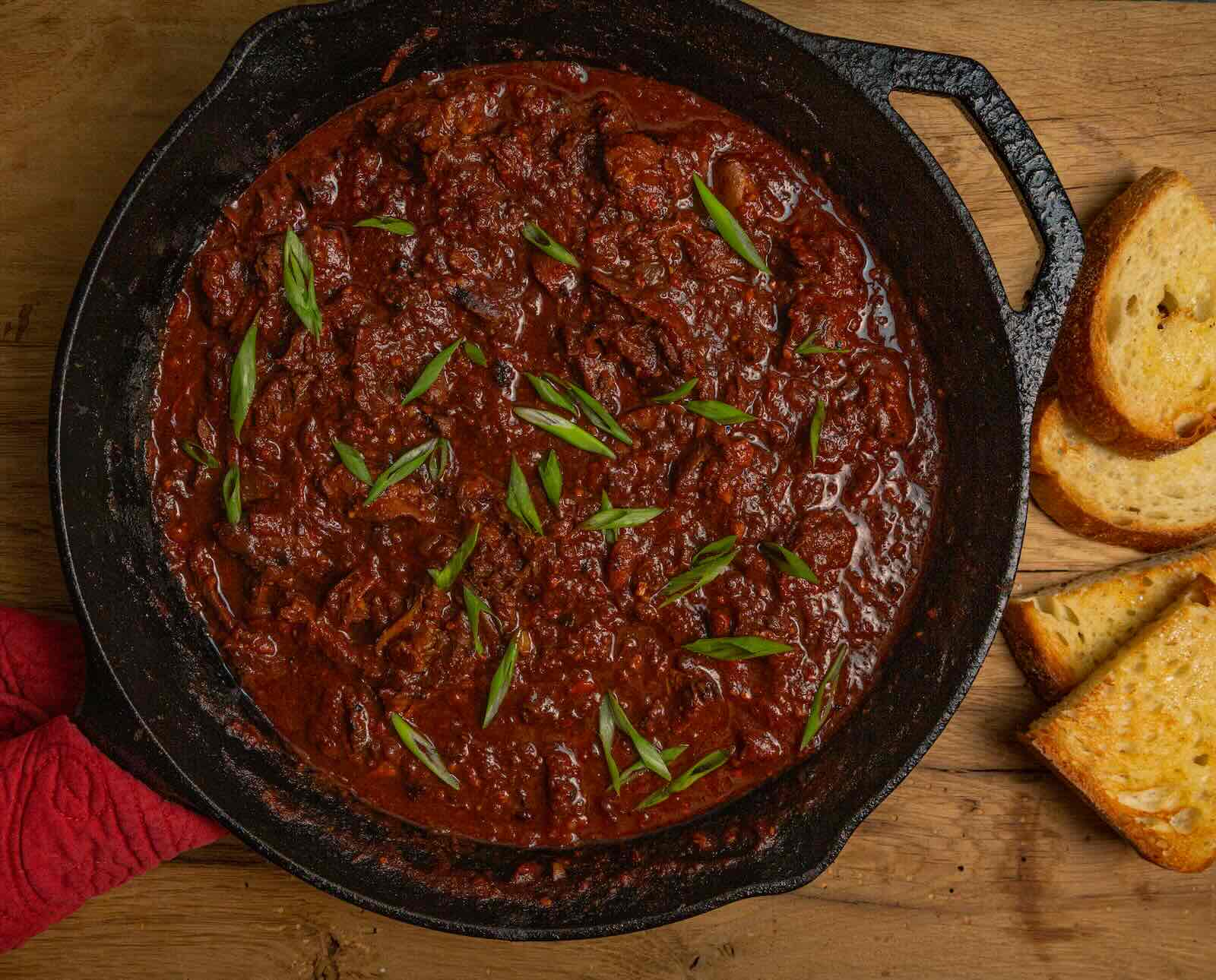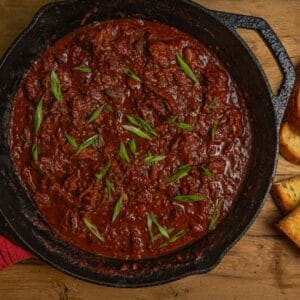
Jack Hennessy grew up in the South Suburbs of Chicago…
A rich, spicy chili with tender goose meat that’ll warm you up this winter
For starters, Canada goose should always taste delicious, and that includes the legs. Like any set of wild bird thighs and legs, these cuts are riddled with collagen that requires low-and-slow cooking to break down and tenderize over time. But once tender, they are a special treat.
With this chili recipe, you can indeed incorporate a sous-vide cooker, which is a culinary tool that regulates a water bath to a 1/10 of a degree. Meat, when sealed and placed in the water bath, will slowly cook. It’s a great tool for tougher cuts like wild bird wings, thighs, and legs, as it’s very hands-off and will continue doing its job well into the night while you sleep soundly.
While I recommend a sous vide for any serious wild-game cook, it’s not essential here. These goose legs will tenderize in the chili sauce—it’ll just take more time and be a bit more hands-on, as you will need to monitor to make sure the legs remain submerged in the sauce and that the sauce is not drying out.
By searing and simmering these goose legs, we are essentially braising the meat, which is the method of slowly cooking meat in liquids so it will tenderize. In the end, you should achieve that fall-off-the-bone texture to your goose meat.
By using the canned enchilada sauce, we are eliminating the process of rehydrating a medley of chile peppers and pressing them through a conical strainer to produce a paste. But if that is your thing—and if you know how to do it well—I’d say put in the effort, if you got the time, versus the canned sauce.

Canada Goose Leg Chili
Ingredients
- 4 Canada goose legs
- Kosher salt
Marinade
- 12 oz crushed tomatoes
- ½ cup beef stock
- ¼ cup port wine
- 2 cloves garlic freshly minced
- 2 tbsp Sambal chili paste
- 2 tbsp honey
Chili Mix
- 1 medium yellow onion finely diced
- Salted butter
- 16 oz Enchilada sauce Las Palmas or similar, potentially more
- 1 cup beef stock potentially more
- 1 cup red or dark ale potentially more
- 3 tbsp morello cherry preserves
- ½ tsp paprika
- ½ tsp granulated garlic
- ½ tsp cumin
- ½ tsp coriander
- 1½ tbsp chili powder
Instructions
- Create the marinade by combining all its ingredients in a medium saucepan and bringing it to a low simmer. Allow to simmer for half an hour, then let it cool. Put it in the fridge to get cold.
- Lightly salt the goose legs on all sides. Once the marinade is cold, add the goose legs to the marinade. If you plan to use a sous vide, seal the marinade with legs in a bag and sous vide at 170 F for 14 hours. If not using a sous vide, marinate the legs overnight.
- In a large skillet, heat on medium-low, add the finely minced onion and lightly salt it. Stir it until seared and caramelized, approximately 20-30 minutes. Add the enchilada sauce, beef stock, ale, morello cherry preserves, paprika, granulated garlic, cumin, coriander, and chili powder. Stir the ingredients and turn heat to low.
- Add the goose legs to the skillet and cover. If the legs were sous-vide cooked ahead of time, this process won’t take as long (perhaps 1-2 hours). At the 1-hour mark, you may wish to cut meat off the bone into chunks and add back to the skillet for another hour. If the legs were not sous-vide cooked ahead of time, this process could take upwards of 6 hours or longer, during which you will likely need to add enchilada sauce, beef stock, and ale into the skillet to keep it from drying out.
- Chili is done when goose-leg meat is tender.
Nutrition
Jack Hennessy grew up in the South Suburbs of Chicago and didn't start hunting until he attended graduate school in Spokane, Washington, at the age of 26. Hennessy began work in professional kitchens in high school but didn't start writing wild game recipes until he joined the Spokesman-Review in 2014. Since then, his recipes have appeared with Petersen's Hunting, Backcountry Journal, Gun Dog Magazine, among many others. He now lives with his Wirehaired Vizsla, Dudley, in Wichita, Kansas.



